Oldest means of transportation: When people first started using basic tools and their own physical prowess, the first forms of transportation were invented. Walking was the main means of transportation for early humans, enabling them to travel small distances. As cultures developed, they started to tame animals like horses and camels, which greatly increased their capacity for mobility.
Furthermore, primitive boats like as canoes and rafts made it possible to navigate across bodies of water. The foundation for the centuries-long development of more advanced modes of transportation was created by these early modes of transportation. In this article, we will take a look at some of the earliest modes of transportation of which most of them are still very much relevant.
Recommended: Most Dangerous People In the World
Top 6 Oldest means of transportation
1. Ship: Throughout thousands of years, ships have been used for transportation, and they have played a significant role in the development of human civilization. Ships were essential to the commerce, exploration, and military operations of ancient societies such as the Greeks, Romans, Egyptians, and Phoenicians. The Phoenicians were renowned for their sophisticated shipbuilding methods, whereas the Egyptians traveled and traded on the Nile using riverboats. The Vikings were well-known in the Middle Ages for their robust longships, which enabled them to travel great distances for commerce and exploration.
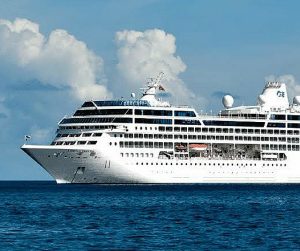
The Age of Exploration began in the Renaissance as a result of developments in ship construction, navigation, and mapping. During this time, ships were used by explorers such as Ferdinand Magellan, Vasco da Gama, and Christopher Columbus to find new continents and create trade routes. Sailing ships dominated the seas from the 15th to the 19th century, with designs ranging from galleons to frigates.
These vessels were used in naval combat, commerce, and colonization. Navigating became much easier with the invention of devices like the compass and lateen sail. The 19th century saw the invention of steam power, which completely changed ship propulsion. Long-distance travel became more dependable and effective with the advent of steamships, which were quicker and could go against the wind and currents.
Additional technical developments in the 20th century included the creation of diesel engines, which were soon to be the norm for the majority of passenger and freight ships. The mid-1900s saw the revolution of containerization, which improved logistics and freight handling and increased trade efficiency worldwide. With ships transporting more than 80% of all commerce volume worldwide, ships continue to play a crucial role in the global economy. They provide links across continents and allow for hitherto unheard-of levels of resource and good exchange.
Recommended: Countries with highest unemployment rate in the world
2. Rail transit: Among the most important and traditional forms of transportation are trains. They first appeared in the early 19th century, and by offering a dependable and effective way to transport people and commodities over great distances, they completely changed travel and business. When George Stephenson’s “Locomotion No. 1,” the first steam-powered locomotive, turned on in 1825, rail transportation reached a significant turning point. Since then, railways have been essential in forming economies and tying together remote parts of the globe.
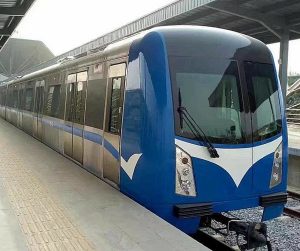
They still play a crucial role in contemporary transportation networks since they are quick, effective, and good for the environment.
Also see: Advantages and Disadvantages of living in Canada
3. Ferry: With a millennium-long history, ferries are undoubtedly among the most durable and ancient modes of transportation. Ferries have a long history that probably predates written records. Early societies understood the necessity to traverse bodies of water, and they used basic boats or rafts to move people, products, and animals. Ferries were essential in enabling commerce and travel, which let communities interact and share resources.
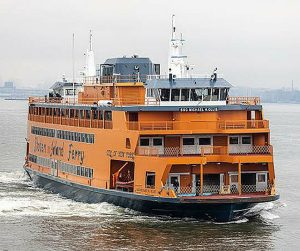
They were particularly important in areas with lakes, rivers, and coasts. Ferries are the subject of folklore and mythology in many civilizations. For instance, Charon was the ferryman in Greek mythology who carried souls to the underworld by crossing the River Styx. Ferries have taken many different shapes throughout the years, ranging from basic rowboats or canoes driven by a pole or paddle to more intricate boats with sails or oars.
Technological developments brought to the evolution of more complex ferry designs throughout time. In the 19th century, steam-powered ferries became popular because they were more dependable and efficient. Further upgrading of ferries occurred in the 20th century with the introduction of diesel engines and, in some circumstances, the building of huge, fast catamarans or the use of hovercraft technology. Ferries are still a vital component of a lot of global transportation networks.
Ferries are essential for connecting islands to the mainland, and in certain places, they are included in public transportation systems. An growing number of contemporary ferries are built with environmental sustainability in mind. Some cut pollutants and lessen their effect on the environment by using innovative engineering, hybrid propulsion systems, or alternative fuels.
Also see: Advantages and Disadvantages of living in the United States
4. Bus: With a lengthy history, buses are an important kind of transportation. The idea of a bus originated with horse-drawn omnibuses in the early 1800s, which were bigger vehicles intended to accommodate many people. In essence, they were spacious vehicles that had room for many passengers.
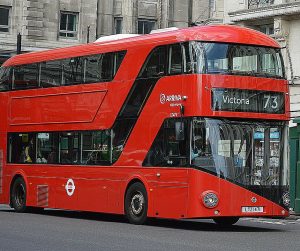
Motorized buses were developed in the late 19th and early 20th centuries; at first, they were powered by steam engines, but later on, internal combustion engines were used. Buses were a crucial part of the public transportation networks that many cities started to build. This made it possible for people to move about cities more freely and was essential to the growth of contemporary cities.
Bus design experienced several developments throughout the 20th century, including the advent of articulated buses, double-decker buses, and vehicles tailored for specific needs, such as tour buses and school buses. There’s been a movement in recent decades for greener modes of transportation. As a result, buses running on electricity, natural gas, and other alternative fuels have been developed and used. Every day, millions of commuters throughout the globe rely on buses as an essential part of their public transit networks, which provide accessibility and convenience.
They are an affordable means of transporting big crowds of people throughout cities. Additionally, buses are essential for offering intercity transportation choices and connecting rural areas to metropolitan centers, particularly in locations where train or air travel may not be as convenient or accessible. Because they are designed to be accessible to individuals with varying ages and physical abilities, buses are essential for the development of inclusive transportation networks.
Recommended: Countries with the best education system in the world
5. Rickshaw: One of the most traditional and recognizable modes of human-powered transportation is, in fact, the rickshaw. Asia is where rickshaws first appeared; they date back to Japan in the late 1800s. They were originally intended to be a human-pulled, two-wheeled cart. With the invention of cycle rickshaws, in which a person pulled people in a carriage attached to a bike, the rickshaw’s shape changed.
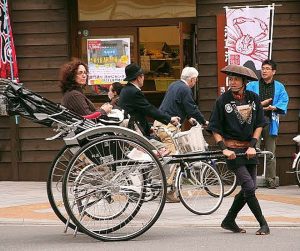
This style became well-liked in other Asian cities. Another kind of rickshaw is the pulled rickshaw, in which passengers are transported by a human puller maneuvering a two-wheeled cart, sometimes covered by a canopy. This style was popular in Indian towns like Kolkata. Affordable urban transit was made possible in large part by rickshaws, particularly in crowded and highly inhabited cities.
They managed to maneuver around alleyways and small streets that were difficult for motorized vehicles to pass. In many Asian cities, rickshaws have become an essential component of the cultural and economic environment. In addition to serving as a means of transportation, they also gave a sizable number of pullers jobs. In the 20th century, rickshaws came under fire because of worries about the physical strain they put on pullers and the exploitation of human beings. They were progressively phased out in favor of motorized transit in several cities.
In many places, the prevalence of conventional rickshaws has decreased; however, upgraded models, such electric rickshaws and cycle rickshaws with electric assistance motors, have surfaced as a more environmentally friendly substitute. Some locations, particularly historical or touristic districts, maintain and use rickshaws as a cultural attraction, providing tourists with a distinctive mode of transportation. For many, rickshaws are culturally and nostalgically significant since they are a throwback to a different period of Asian city transit. Rickshaws are becoming more and more popular as an environmentally beneficial and sustainable form of transportation, especially in places where motorized cars exacerbate traffic and pollution.
Also see: Countries With The Most Faithful Wives in the world
6. Canoe: The canoe is undoubtedly among the earliest and most basic modes of human movement. For thousands of years, indigenous peoples have traveled the globe on canoes. Natural materials like as animal skins wrapped over a wooden frame or hollowed-out tree trunks were used to create them.

For exploration, commerce, and everyday transit across rivers, lakes, and coastal waterways, canoes were essential. They made it possible for prehistoric societies to travel rivers, opening up trading routes and granting access to resources. Canoes are still a popular means of transportation in certain places even today, especially in isolated or environmentally delicate locations where other modes of transit would not be possible.
Recommended: Countries with the highest number of Scammers
In summary, human creativity and adaptability have been shown via the development of transportation. We have come a long way from the simple days of walking and primitive boats to complex networks of automobiles, trains, aircraft, and ships that link the globe in never-before-seen ways. The first modes of transportation shaped human history and allowed for the international interchange of ideas, products, and civilizations. They also cleared the way for more recent developments. It’s critical that we recognize and value the foundations that helped us get to the current levels of transportation technology even as we innovate forward.

Edeh Samuel Chukwuemeka, ACMC, is a lawyer and a certified mediator/conciliator in Nigeria. He is also a developer with knowledge in various programming languages. Samuel is determined to leverage his skills in technology, SEO, and legal practice to revolutionize the legal profession worldwide by creating web and mobile applications that simplify legal research. Sam is also passionate about educating and providing valuable information to people.